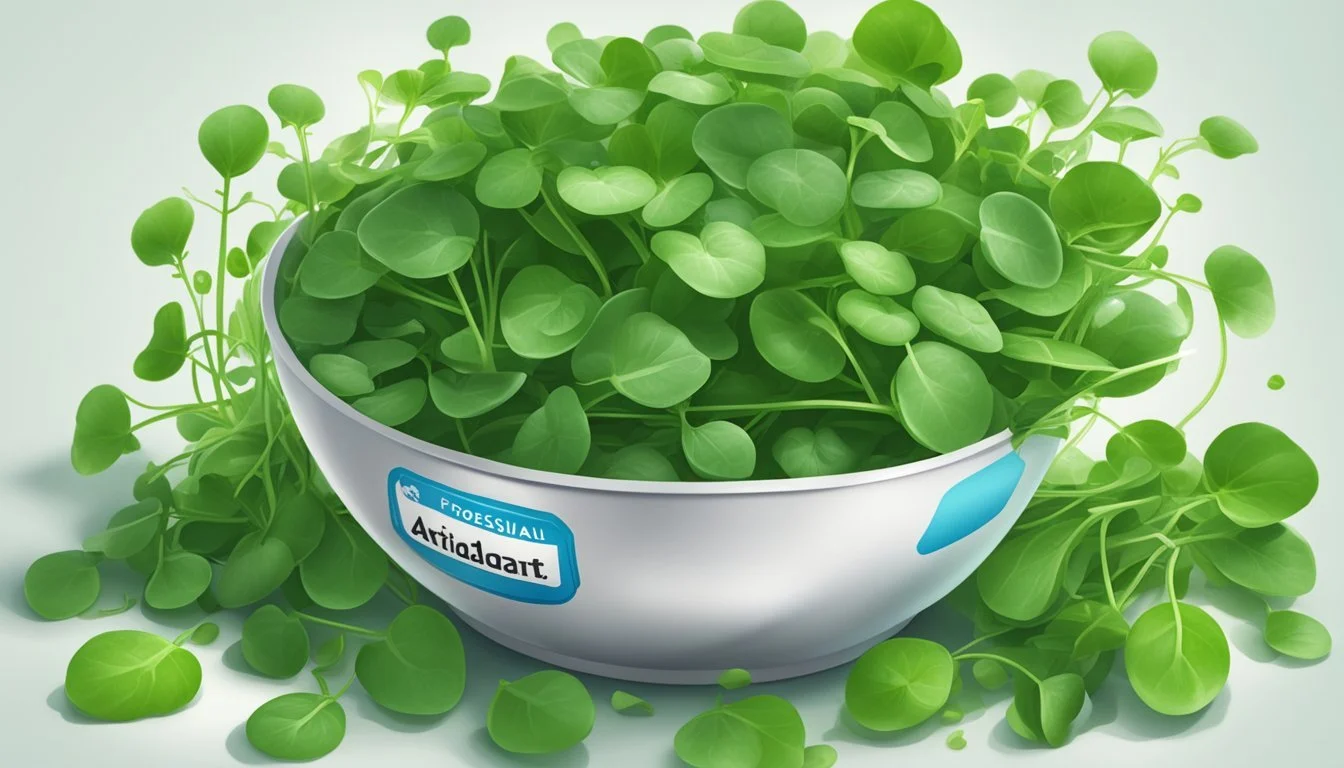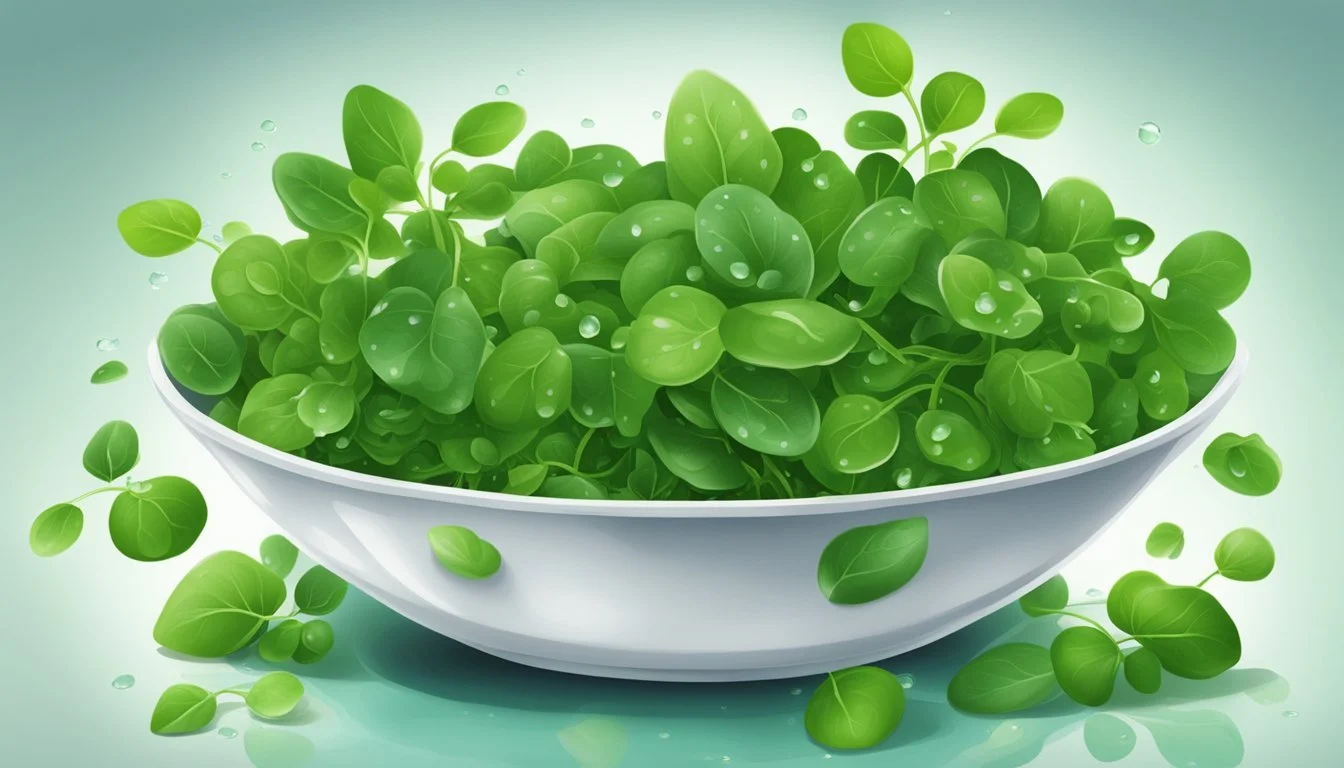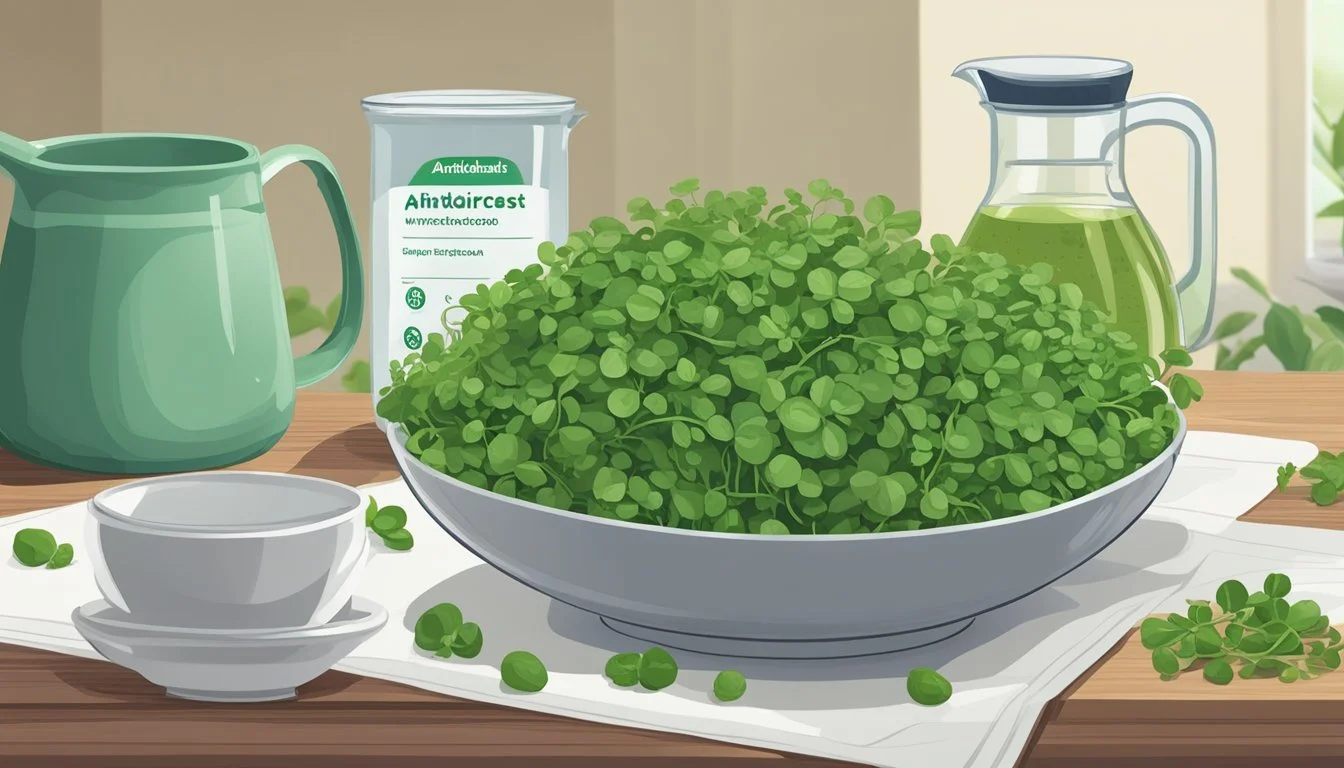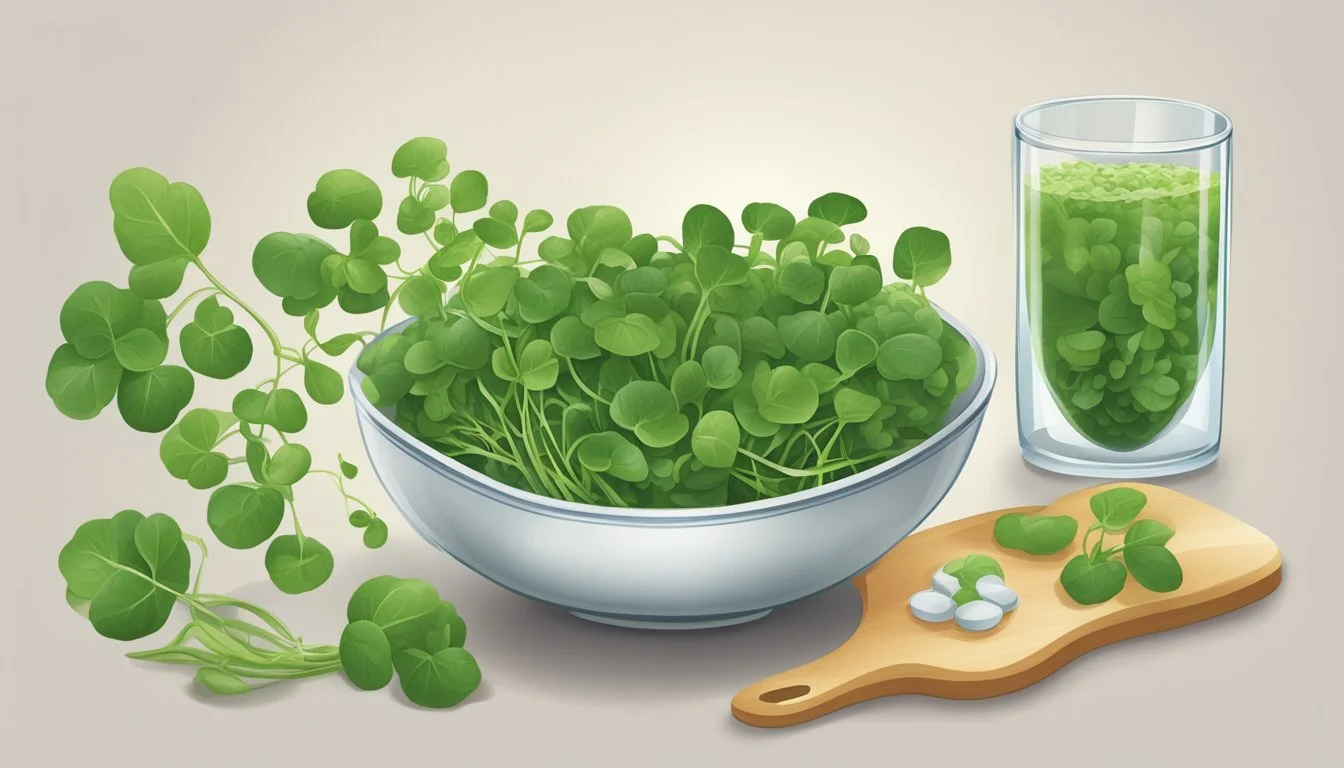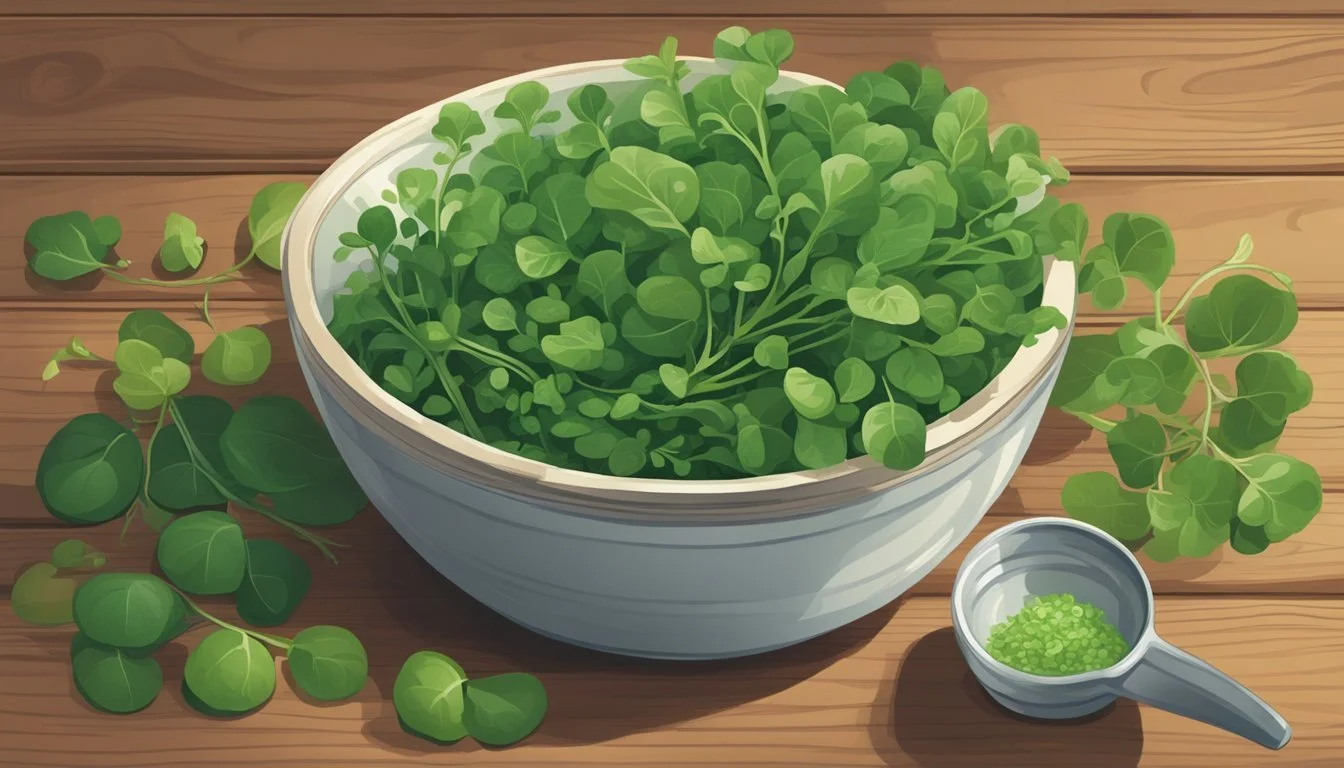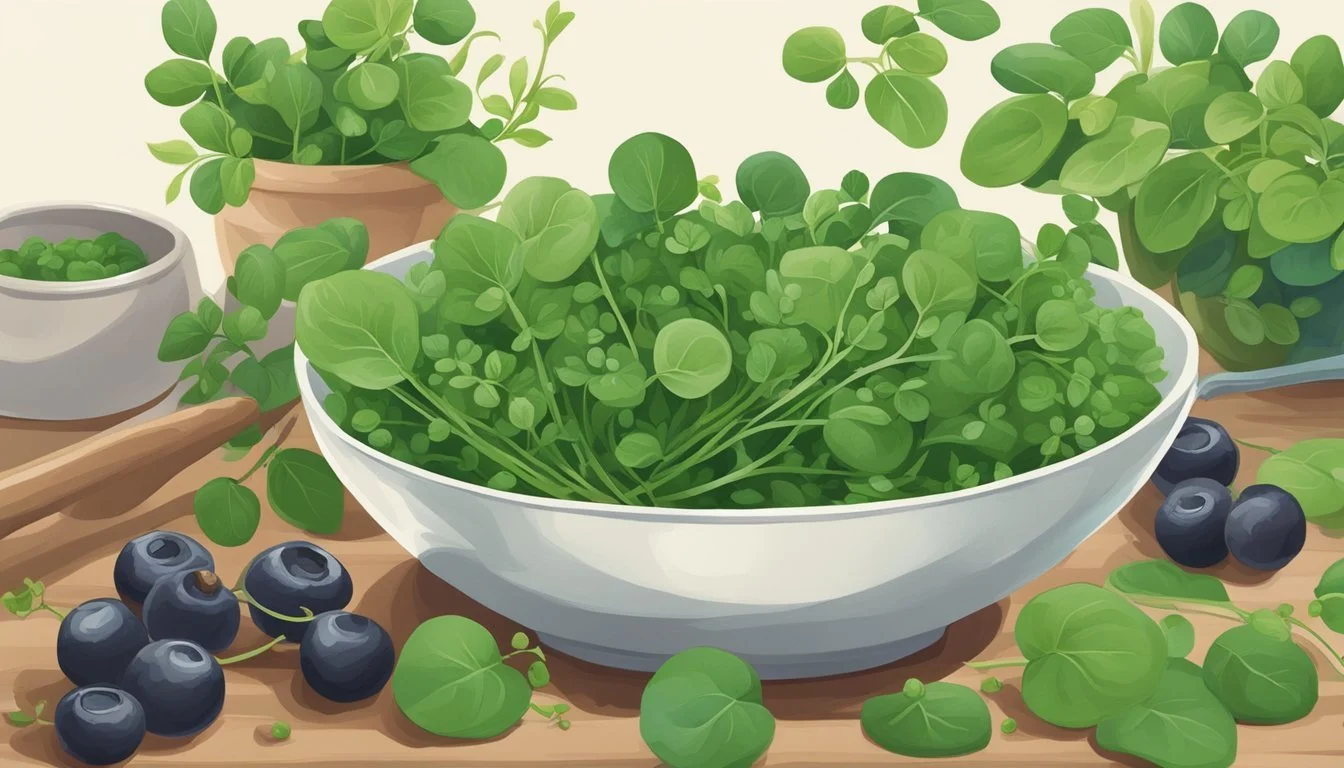How Many Cups of Watercress for Antioxidants
Optimal Daily Intake Explained
Watercress, a leafy green vegetable known for its peppery flavor, is not only a culinary delight but also a powerhouse of nutrition. This aquatic plant is packed with antioxidants, which are substances that can prevent or slow damage to cells caused by free radicals, potentially reducing the risk of chronic diseases. The antioxidants found in watercress include vitamin C, beta carotene, and lutein, all of which are known to bolster the body's defense against oxidative stress.
Determining the optimal quantity of watercress for antioxidant benefits can vary depending on dietary needs and individual health goals. However, research suggests that even a small serving of this nutrient-dense vegetable can deliver significant amounts of these protective compounds. For example, a cup of watercress contains over 100% of the recommended daily intake of vitamin K and is also an excellent source of vitamin C and vitamin A.
To harness the full spectrum of its antioxidant benefits, incorporating watercress into meals in its raw form is generally recommended, as it ensures the maximum retention of the delicate water-soluble vitamins and antioxidants. While the exact amount for optimal antioxidant intake varies by individual, including watercress as part of a varied and balanced diet can contribute to one's overall intake of these vital nutrients.
Nutritional Profile of Watercress
Watercress is a nutrient-rich leafy green that provides an impressive spectrum of vitamins and minerals, low in calories but high in certain vital nutrients. It stands out as an excellent source of antioxidants and essential macronutrients.
Vitamins and Minerals
Watercress is particularly noted for its high content of vitamin K, with one cup offering around 85 micrograms, which is close to the daily recommended value. This aquatic plant is also a good source of vitamin C and vitamin A, with one cup containing 1080 International Units of vitamin A. In addition to these vitamins, watercress is rich in several minerals like calcium, magnesium, potassium, iron, and phosphorus.
Vitamin A: 55 micrograms (mcg) per cup
Vitamin C: Good source
Vitamin K: 85 micrograms (mcg) per cup
Macronutrients in Watercress
In terms of macronutrients, watercress consists mostly of water and has a low presence of protein, fat, and carbohydrates. Specifically, a one-cup serving of chopped watercress generally contains:
Protein: Approximately 0.8 grams
Fat: 0 grams
Carbohydrates: Roughly 0.4 grams
Fiber: 0.17 grams in one cup
These macronutrients combined contribute to watercress's role as a light yet replenishing food, suitable for a variety of dietary needs.
Caloric Value
Watercress is also notably low in calories, which makes it an ideal food for those looking to maintain or lose weight while ensuring they receive adequate nutrients. A one-cup serving of chopped watercress provides roughly 3.7 calories, highlighting its role as a nutrient-dense, low-calorie option for meals and snacks.
Health Benefits of Watercress
Watercress, a leafy green vegetable, is celebrated for its dense nutrient profile and potential role in disease prevention. Rich in key vitamins and minerals, this aquatic plant offers diverse benefits ranging from cancer prevention to bone health enhancement.
Cancer Prevention Potential
Watercress contains compounds like antioxidants that can help combat cancer risk by neutralizing harmful free radicals in the body. Studies suggest that the high levels of antioxidants in watercress can contribute to a lower risk of cancer.
Cardiovascular Health
Regular consumption of watercress may be beneficial for heart health as it helps improve blood pressure and cholesterol levels. Its nitrate content is known to have vascular benefits, potentially reducing the risk of heart disease.
Bone Strength and Development
High in Vitamin K, which is essential for healthy bones and blood clotting, watercress supports bone strength and development. Adequate Vitamin K intake is linked with lower risks of osteoporosis and can be instrumental in preventing bone fractures.
Vision Enhancement
Watercress is a source of lutein and zeaxanthin, two nutrients that play crucial roles in eye health. These antioxidants can help protect against cataracts and age-related macular degeneration, supporting overall vision health.
Blood and Circulation
This leafy green aids in blood circulation due to its iron content, which is vital for creating red blood cells and for transporting oxygen around the body. The presence of nitrates may improve blood vessel function, further enhancing circulatory health.
Comparative Analysis With Other Greens
When considering the antioxidant content in leafy greens, watercress stands out due to its dense concentration of nutrients. This section compares watercress with other popular greens to highlight its relative benefits.
Watercress vs. Kale and Arugula
Watercress contains more vitamin C than kale and arugula, and it is also an excellent source of vitamin K, similar to these greens. However, watercress has the upper hand with a significantly higher level of beta-carotene, which is a precursor to vitamin A, and lutein & zeaxanthin, which are crucial for eye health.
Kale, a cruciferous vegetable like watercress, is often praised for its antioxidants but typically requires more consumption to match the antioxidants found in a smaller serving of watercress. Arugula offers peppery notes, but for those seeking antioxidants in their salads (What wine goes well with salads?) , watercress provides a more robust profile.
Benefits Over Traditional Salad Ingredients
Traditional salad ingredients, which often include iceberg lettuce or romaine, are generally lower in minerals and antioxidants compared to watercress. Watercress boasts greater amounts of calcium and potassium than these typical salad bases. This makes it not only a flavorful addition to salads but also an upgrade in nutritional value.
Calcium: Essential for bone health and muscular function.
Potassium: Key for maintaining electrolyte balance and heart health.
Watercress also has a high water content, making it hydrating food, which is beneficial for overall health.
Nutritional Advantage Against Broccoli and Brussels Sprouts
Although broccoli and Brussels sprouts are nutritional powerhouses among the cruciferous vegetables, watercress often contains higher levels of certain antioxidants on a per-cup basis. This advantage is particularly seen in the levels of folate, which is crucial for DNA synthesis and repair.
Broccoli:
Folate: Present but less concentrated.
Vitamin C: Significant but less per serving compared to watercress.
Brussels sprouts:
Antioxidants: Contains antioxidants but in a lower density.
Vitamin K: High, yet watercress offers a competitive amount, especially considering the smaller serving size needed for the same nutrition punch.
For consumers who want to maximize their intake of antioxidants in a smaller volume of food, watercress is an efficient choice among leafy greens.
Culinary Uses and Recipes
Watercress, with its peppery taste and high antioxidant content, is not only a nutritious, leafy green but also a versatile food that can be enjoyed in a multitude of dishes. Here is how to incorporate it into your meals to gain its health benefits.
Incorporating Watercress into Salads
Watercress makes a flavorful base for salads instead of traditional lettuces. Its unique, peppery flavor pairs well with a simple dressing of oil and vinegar, highlighting its freshness. To keep the salad vibrant, it is best to toss watercress with other ingredients just before serving to maintain its crispness.
Cooking with Watercress
This leafy green, Nasturtium officinale, also reveals a more mellow side when cooked. In soups, watercress contributes a depth of flavor. One can sauté it with leeks in olive oil, lightly seasoned, before adding broth and other vegetables to create a nutritious watercress soup. Watercress can also be wilted in stir-fries or pasta dishes, where it adds its signature taste without overpowering the dish.
Watercress as a Healthy Snack
For a quick, healthful snack, watercress can be turned into a dip. Pairing it with ingredients like garlic may enhance its flavor, and it can be blended with olive oil and seasoning to make a spread that's ideal for sandwiches or as a garnish. Watercress may also be pureed into smoothies, providing an immediate, vibrant green boost.
Storing and Preparing Watercress
To store fresh watercress, it's important to wash it thoroughly to remove any sand or debris. Once washed, watercress should be dried completely, possibly using a salad spinner, and stored in the refrigerator wrapped in a damp paper towel to keep it fresh and crisp. This procedure helps in preserving watercress's peppery taste, ensuring consistent flavor when it is used as a garnish or in any fresh or cooked dish.
Considerations and Possible Interactions
When incorporating watercress into one's diet for its antioxidant benefits, it is important to consider potential interactions with medications and individual sensitivities. This section outlines key considerations to be mindful of.
Interaction with Medications
Watercress contains high levels of vitamin K, which plays a crucial role in blood clotting. Consequently, it has the potential to interact with blood-thinning medications such as warfarin. For individuals on warfarin, consuming watercress in large amounts may diminish the effectiveness of the medication due to vitamin K's clot-promoting properties. It is advised that those on blood thinners closely monitor and consult with their healthcare provider about their watercress intake to avoid counteracting their medication.
Allergies and Individual Sensitivities
Although watercress is generally considered safe for consumption, it may cause allergic reactions in some individuals, especially those with a history of sensitivity to cruciferous vegetables. Symptoms can range from mild – such as itching or hives – to more severe reactions. Additionally, watercress may impact cholesterol levels for individuals with lipid metabolism sensitivities, as it contains compounds that can influence nutrition and health. Being vigilant about the quantity consumed is important to derive the health benefits associated with its antioxidants, while also respecting one's body and its limits.
Watercress in Diets and Nutrition Plans
Watercress fits neatly into various nutrition plans due to its low calorie content and high nutrient density. It offers health benefits ranging from weight management to anti-inflammatory properties, making it a valuable food for health-conscious individuals.
Role in Weight Management
Watercress is an attractive choice for weight loss strategies as it is low in calories while being high in fiber and protein. This combination can aid in feeling full on fewer calories, which is conducive to weight loss. According to published nutritional data, a one-cup serving of chopped watercress contains approximately 3.7 calories, which contributes minimally to daily caloric intake.
Calories: Low (3.7 calories per cup chopped)
Fiber: Contributes to satiety
Protein: Essential for muscle maintenance during weight loss
Inclusion in Anti-inflammatory Diets
Inflamed tissues are a concern for many individuals due to their potential link to chronic diseases. Watercress is rich in vitamins C and K, which have anti-inflammatory properties. Consumption of watercress may lead to a reduction in markers of inflammation according to some studies published in the American Journal of Clinical Nutrition.
Vitamin C: Helps reduce inflammation
Vitamin K: Plays a role in inflammatory responses
Nutrient Density for Health-Conscious Eaters
Being nutrient-dense means that watercress provides a high amount of vitamins and minerals in comparison to its calorie content. It is recognized by the CDC as one of the most nutrient-dense foods, packed with essential vitamins like A, C, and K, contributing to various health benefits from supporting the immune system to maintaining healthy cholesterol levels.
Vitamins A, C, K: Abundant in watercress
Minerals: Includes calcium, potassium, and magnesium
Nutrient Density: High, according to CDC research
Watercress and Global Cuisine
Integrating watercress into cuisine has a long history, with distinctive approaches seen across various continents. It is celebrated for its peppery flavor and nutritional value, often serving as a vital component in salads and soups.
Traditional Use in European Dishes
In Europe, watercress is a time-honored ingredient, predominantly featured in salads and soups. The English have been incorporating it into their watercress soup, renowned for its simple yet vibrant flavor. This leafy green also commonly graces the plates of a traditional English breakfast.
French cuisines adorn their dishes with watercress, creating the famous 'potage au cresson', a creamy watercress soup that emphasizes its spicy tang.
Watercress in Asian Cuisines
Watercress finds its way into Asian culinary traditions, especially within Chinese and Japanese kitchens. The Chinese utilize it in stir-fries and soups, taking advantage of its ability to remain resilient under high heat while contributing a hint of bitterness to balance the dish.
In Japanese cooking, watercress often complements seafood plates or is served as a refreshing side salad dressed with light vinaigrettes to enhance its natural zest.
Modern Fusion and Gourmet Recipes
Chefs are now showcasing watercress in innovative ways, combining its distinctive flavor with other ingredients to create modern fusion dishes. Gourmet salads often feature watercress as a base, enhanced with nuts, fruits, and artisanal cheeses.
High-end restaurants may present it as a garnish or an integral element of an entree, appreciating watercress for its versatility and punchy flavor that pairs well with a wide array of proteins and vegetables.
Myths and Facts About Watercress
Watercress is surrounded by myths regarding its nutritional value and health benefits. This section addresses common misconceptions and clarifies what claims are substantiated by evidence.
Nutritional Misconceptions
Myth: One must consume a large amount of watercress to benefit from its nutrients.
Fact: Watercress is nutrient-dense, meaning even small amounts can provide significant vitamins and minerals. For example, just 3 cups of chopped watercress, which is approximately 100 grams, contains only 11 calories but offers a robust amount of vitamin K—close to the daily recommended allowance for adults—and provides notable levels of vitamin A and vitamin C.
Key Nutrients Amount in 1 Cup Chopped (34g) Calories 3.7 Protein 0.8g Vitamin K 85 mcg Vitamin A 1080 IU Vitamin C Varies
Health Benefit Claims
Myth: Watercress alone is a cure-all for chronic illnesses like cancer and heart disease.
Fact: While no single food can prevent illness, watercress is a cruciferous vegetable that is part of a group of plants known for containing health-promoting phytochemicals. It's these constituents that may contribute to reduced cancer risk and improve heart health. The antioxidants found in watercress, such as beta-carotene and lutein, are important for eye health. Moreover, watercress contains dietary nitrates that can help lower blood pressure, benefiting heart health.
Myth: Watercress provides little to no calcium or magnesium.
Fact: Conversely, watercress does contain small amounts of calcium and magnesium, important minerals for bone health and general well-being. Additionally, its high water content and rich vitamin profile make it a healthful addition to one's diet as part of a varied intake of fruits and vegetables.
Summary and Key Takeaways
Watercress is a leafy green vegetable known for its high nutrient content and health benefits, particularly as a source of antioxidants. It contains a spectrum of vitamins and minerals, including significant levels of vitamin K, vitamin A (in the form of beta-carotene), and vitamin C.
Nutritional Components of Watercress:
Vitamins: A rich source of vitamin K, vitamin C, and vitamin A (as beta-carotene).
Antioxidants: Contains lutein and zeaxanthin, known to support eye health.
Minerals: Supplies a variety of minerals including potassium, calcium, and magnesium.
In terms of macronutrients, watercress provides a low-calorie profile with minimal carbohydrates, sugars, and fats. It is also a source of fiber and protein, although in smaller quantities.
Health Benefits:
Antioxidant advice: Eating watercress contributes to one's intake of antioxidants, which help combat oxidative stress by neutralizing free radicals.
General nutrition: Incorporating watercress into a diet adds essential nutrients without significantly increasing calorie intake.
Given its dense nutrient profile, watercress can be included as part of a balanced diet to help meet one's antioxidant needs. The specific quantity for optimal antioxidant intake may vary based on individual dietary requirements, overall dietary patterns, and health goals.
Recommendation: There is no one-size-fits-all answer to the optimal amount of watercress for antioxidants, as individual needs can vary. However, integrating watercress into regular meals, such as salads or as a garnish, can help contribute to an individual’s antioxidant intake and offer health benefits.


